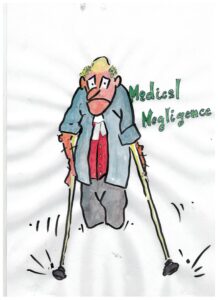Writing Reasons For Decisions
- 2021-09-01
- By Dr Will Higgs PhD, Barrister
- Posted in Artificial Intelligence, featured, Reasons for a decision
A paper delivered at the Commonwealth Administrative Appeals Tribunal (AAT)
Seminar on Reasons at Sydney on 17 August 2016 by
By Mark A Robinson SC
In writing reasons for decisions, one is best guided by becoming aware of and applying the more general rules that apply to other State and Federal Tribunals and quasi-judicial decisionmakers in Australia. The extent of the reasons given by the Tribunal here should be so much as is necessary to properly and fully record the real or actual reasons for the decision (or draft or interim decision) and it should identify:
- the statutory power(s) being exercised;
- the documents, material, policy or matters taken into account;
- the findings on material questions of fact; and
- the reasoning process leading to the conclusions made.
The Tribunal may take guidance in this task from a number of useful sources. One recent source is the High Court decision in In Wingfoot Australia Partners Pty Ltd v Kocak (2013) 252 CLR 480, the High Court determined (in a Victorian workers compensation statutory regime concerning a Medical Panel) (at [55]), in relation to the duty to give reasons:
“The statement of reasons must explain the actual path of reasoning by which
the medical panel in fact arrived at the opinion the medical panel in fact
formed on the medical question referred to it. The statement of reasons must
explain that actual path of reasoning in sufficient detail to enable a court to
see whether the opinion does or does not involve any error of law. If a
statement of reasons meeting that standard discloses an error of law in the
way the medical panel formed its opinion, the legal effect of the opinion can
be removed by an order in the nature of certiorari for that error of law on the
face of the record of the opinion. If a statement of reasons fails to meet that
standard, the failure is itself an error of law on the face of the record of the
opinion, on the basis of which an order in the nature of certiorari can be made
removing the legal effect of the opinion.”
The NSW Court of Appeal in Zahed v IAG Limited t/as NRMA Insurance (2016) 75 MVR 1;
[2016] NSWCA 55 held that Wingfoot applies to reasons given by a State Insurance
Regulatory Authority (SIRA) claims assessor (assessing motor accident damages) in the
subject legislative scheme in NSW (per Emmett JA at [34], Meagher and Leeming JJA
agreeing).
In Sadsad v NRMA Insurance Ltd (2014) 67 MVR 601, the Supreme Court of NSW
considered the adequacy of reasons of a SIRA medical assessor, rather than a claims assessor.
However, the underlying principles are substantially the same. After applying Wingfoot
Australia Partners Pty Ltd v Kocak (2013) 252 CLR 480, Hamill J stated (at [47] – [48]):
“It is one thing to give a “beneficial construction” to the reasons of an
administrative decision-maker. It is another to fill in the gaps in the path of
reasoning by reference to an assumption that the decision was made according
to the relevant law (in this case cl 2.5). This accords with the approach taken
by Stone J in SZCBT v Minister for Immigration and Multicultural Affairs
[2007] FCA 9 at [26]:
[26] The minister urged a “beneficial” construction of the Tribunal’s reasons
and referred to comments made in Minister for Immigration and Ethnic Affairs
v Wu Shan Liang (1996) 185 CLR 259. The phrase “beneficial construction”,
as used in Wu Shan Liang has a specific meaning, and was certainly not
intended to mean that any ambiguity in the Tribunal’s reasons be resolved in
the Tribunal’s favour. Rather, the construction of the Tribunal’s reasons
should be beneficial in the sense that the Tribunal’s reasons would not be
over-zealously scrutinised, with an eye attuned to error. In this sense a
“beneficial” approach to the Tribunal’s reasons does not require this court to
assume that a vital issue was addressed when there is no evidence of this and,
indeed, the general thrust of the Tribunal’s comments suggest that the issue
was overlooked.Further, while to “fulfil a minimum legal standard, the reasons need not be
extensive”, “where more than one conclusion is open, it will be necessary for
the [decision-maker] to give some explanation of its preference for one
conclusion over another”: Campbelltown City Council v Vegan (2006) 67NSWLR 372 at [121]–[122] per Basten JA.”
In addition to guidance from the courts, rules and practices concerning writing reasons for decisions of any executive or administrative decision-maker are useful and relevant. In NSW, The New South Wales Civil and Administrative Tribunal (NCAT) and its appeal panel must give notice of any decision made on the proceedings (section 62(1) of the Civil and Administrative Tribunal Act 2013 (NSW)). If no reasons are provided, any party may, within 28 days of being given notice of a decision, request the tribunal to provide a written statement of reasons for its decision. The statement must be provided within 28 days after the request is
made (section 62(2)). Written reasons must include the following:
– the findings on material questions of fact, referring to the evidence or other material on which those findings were based,
– the tribunal’s understanding of the applicable law,
– the reasoning processes that lead the tribunal to the conclusions it made.
(cf section 49(3) and 89 of the former ADT Act). The tribunal also has the power to correct obvious errors on the face of decisions (section 63).
This section may be compared with the Commonwealth provisions on which it was clearly modelled. The NSW provision was arrived at after taking into account long-established federal case law on the subject.
Section 62 of the NCAT Act should be adopted by all as the goal to be achieved so as to set out defensible and lawful reasoning.
Helpful guidelines were produced by the Administrative Review Council styled “Practical Guidelines for Preparing Statements of Reasons” in June 2000. A commentary on the said guidelines was also published at the same time. The guidelines (last revised on 26 May 2003) and the commentary are posted on the internet.
The Guidelines, for example, state in clear and practical terms (at page 12):
“State the real reasons for your decision. Do not rewrite history when preparing a statement of reasons. Every decision should be capable of a logical explanation. Your statement must contain all steps of reasoning, linking the facts to your decision, so that the person reading the statement can understand how your decision was reached. Your statement must go further than state your conclusions – you must give real reasons for those conclusions. You should also indicate any relevant policy statements or guidelines or other agency practices you took into account. In essence, you need to include any detailed background to the making of your decision, so that the person who receives the reasons will understand them (and not have to guess at any gaps).”
A checklist for the ensuring that the Tribunal sets outs proper reasoning is presented below.
Preliminary Matters
You have already made your decision. If so, you should have already undertaken most or all of the following steps:
(a) identified the decision to be made;
(b) identified your statutory powers;
(a) examined/considered/understood your statutory powers in their proper context;
(b) ensured that your copy of the statutory powers is complete, consolidated andup-to-date;
(c) noted/considered/identified any relevant government policy/manual/practice (you will later “engage” with this material);
(d) sought further information if required;
(e) undertaken any other investigation if required;
(k) decided whether any matter is appropriate to be attached to your decision, such as the imposition of conditions or qualifications and whether such matters are appropriate and lawful.
The Reasons for Decision
Follow, an established procedural form if one is available. If one is not, attempt to create a generic one and use it (but not slavishly).
As to your decision itself, there are 2 principal parts to this process. There are the easy parts and the hard parts. The easy parts are marked with an asterisk as follows:
-the decision to be made, by reference to the matters referred;
-the statutory powers/policy/guidelines/practice;
-the evidence both in support and against the making of the decision;
-the findings on material questions of fact, referring to the evidence or other
-material on which those findings were based; and
-your own reasoning process or processes that led you to the conclusion or conclusions you made (your real path of reasoning – your actual path of reasoning recorded in sufficient detail so as to enable a court to see whether your opinion does or does not involve any error of law – Wingfoot at [55]);
-your conclusion/decision/determination.
Writing Up the Hard Parts
This involves:
(a) findings of fact, referring to the evidence; and
(b) your reasoning processes
the hardest part of all;
read and consider everything first and bullet point the major factors which have turned your mind. Then set down those factors. This should ultimately comprise the core of your reasoning process;
be brief, simple and clear (Justice Kirby’s “blessed trinity”)
If you can (and if you need to) present a cogent explanation or argument in your reasoning;
be relevant, select only the principal and essential issues necessary for the decision;
no clutter or minor details should be included;
resist the temptation to stray into other (possibly more interesting) areas and ideas;
follow the language of the statutory power that you are applying. Always do this. Never attempt to paraphrase or rewrite the statute or the delegated instruments in the making of your decision;
include only the real reasons for your decision, not all possible reasons or other reasons which come to mind if those reasons have not being the reasons which turned your mind;
include only your reasons and not the reasons of any other person or entity. Failure to do this will probably render the decision void; use appropriate language that is plain and clear; remember your audience at all times:
(i) the applicant;
(ii) the Minister or the Department;
(v) the Federal Circuit Court; the Federal Court or the Supreme Court of a State; and
(vi) all those who have access to the relevant Registers where the decisions and reasons are published. inform them all, expose them all to your reasoning process in full;
-be honest and courageous in setting out your reasoning process;
-refer to the evidence you accept and say why you accept it; refer to the evidence you reject and say why you reject it (not always necessary, but it does not hurt);
-if you can’t explain it, you probably have not understood it;
-identify any aspect of policy or guidelines that you are relying on and in what respects. Do this with some precision;
-if in doubt – or just do it anyway, put down your draft written reasons for a while and review them later; and,
-review your draft written statement of reasons at least once before handing down your decision. The object of your review, or rewriting should be to:
-expunge superfluous details and repetition;
-remove unnecessary emphasis;
-eliminate the words not necessary to express the idea, clichés, verbiage, redundancies and grammatical errors; tighten the text;
-delete any sexist and otherwise prejudiced expressions; and
-verify punctuation and spelling.
17 August 2016 Mark A Robinson SC, Maurice Byers Chambers
SEARCH BLOG POSTS
LATEST BLOG POSTS
- Updated product safety mandatory reporting guidance for suppliers now available
- Pleading fraud – cause and effect is essential
- Does the Trustee’s right of indemnity have priority over the right of beneficiaries in relation to assets?
- Rules of war (in a nutshell) | The Laws Of War
- MH370 Final Report
Past Blog Posts
- December 2021
- September 2021
- August 2021
- May 2021
- April 2021
- March 2021
- August 2020
- February 2020
- September 2019
- February 2019
- December 2018
- July 2018
- April 2018
- December 2017
- May 2017
- February 2017
- December 2016
- November 2016
- October 2016
- September 2016
- August 2016
- April 2016
- March 2016
- October 2015
- September 2015
- August 2015
- May 2014
- April 2014
- March 2014
- January 2014
Categories
- Appeals
- Artificial Intelligence
- Aviation law
- Banking and Finance Law
- Blogs
- Civil Liability Act
- Class Actions
- Coding for lawyers
- common law
- Consumer Claims (TPA)
- Contract Law
- Contractual Interpretation
- Criminal law
- Deeds
- Docassemble
- duty of care
- Engineering Law
- Equity
- Evidence
- Exclusion Clauses
- Execution of documents
- Expert Witness
- featured
- Financial Services
- Fraud
- Fundraising (Chapter 6D)
- General comment
- Home Building Law
- Insurance
- Legal drafting
- Local Court
- Medical Negligence
- MH370
- Motor Accidents
- Negligence
- Occupiers negligence
- Other
- Personal Injury
- Personal Property Securities (PPSA)
- Pleading
- Practice & Procedure
- Products Liability
- Property
- Real Property
- Reasons for a decision
- Securitisation
- Security (Mortgages & Charges)
- Sentencing
- Swaps & Derivatives
- Teaching
- Transactional Law
- Transfer of financial assets in transactions
- Trusts & Trustee Law
- Uncategorized
- War and Weaponry
- Witnesses
SEARCH BLOG POSTS
LATEST BLOG POSTS
- Updated product safety mandatory reporting guidance for suppliers now available
- Pleading fraud – cause and effect is essential
- Does the Trustee’s right of indemnity have priority over the right of beneficiaries in relation to assets?
- Rules of war (in a nutshell) | The Laws Of War
- MH370 Final Report
Past Blog Posts
- December 2021
- September 2021
- August 2021
- May 2021
- April 2021
- March 2021
- August 2020
- February 2020
- September 2019
- February 2019
- December 2018
- July 2018
- April 2018
- December 2017
- May 2017
- February 2017
- December 2016
- November 2016
- October 2016
- September 2016
- August 2016
- April 2016
- March 2016
- October 2015
- September 2015
- August 2015
- May 2014
- April 2014
- March 2014
- January 2014
Categories
- Appeals
- Artificial Intelligence
- Aviation law
- Banking and Finance Law
- Blogs
- Civil Liability Act
- Class Actions
- Coding for lawyers
- common law
- Consumer Claims (TPA)
- Contract Law
- Contractual Interpretation
- Criminal law
- Deeds
- Docassemble
- duty of care
- Engineering Law
- Equity
- Evidence
- Exclusion Clauses
- Execution of documents
- Expert Witness
- featured
- Financial Services
- Fraud
- Fundraising (Chapter 6D)
- General comment
- Home Building Law
- Insurance
- Legal drafting
- Local Court
- Medical Negligence
- MH370
- Motor Accidents
- Negligence
- Occupiers negligence
- Other
- Personal Injury
- Personal Property Securities (PPSA)
- Pleading
- Practice & Procedure
- Products Liability
- Property
- Real Property
- Reasons for a decision
- Securitisation
- Security (Mortgages & Charges)
- Sentencing
- Swaps & Derivatives
- Teaching
- Transactional Law
- Transfer of financial assets in transactions
- Trusts & Trustee Law
- Uncategorized
- War and Weaponry
- Witnesses





